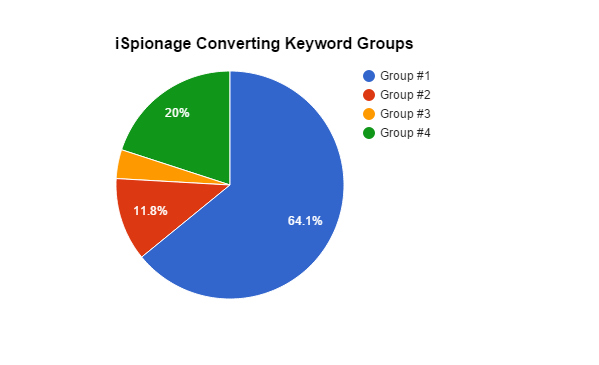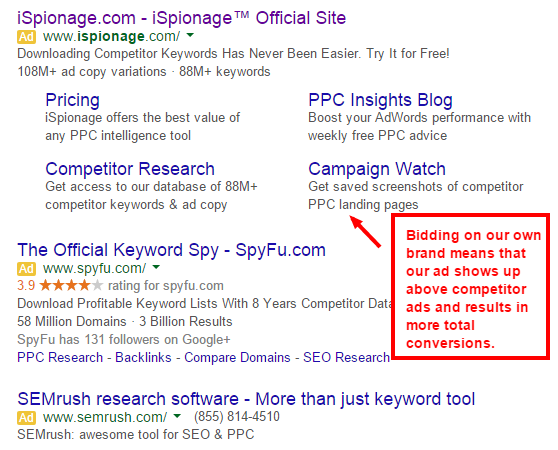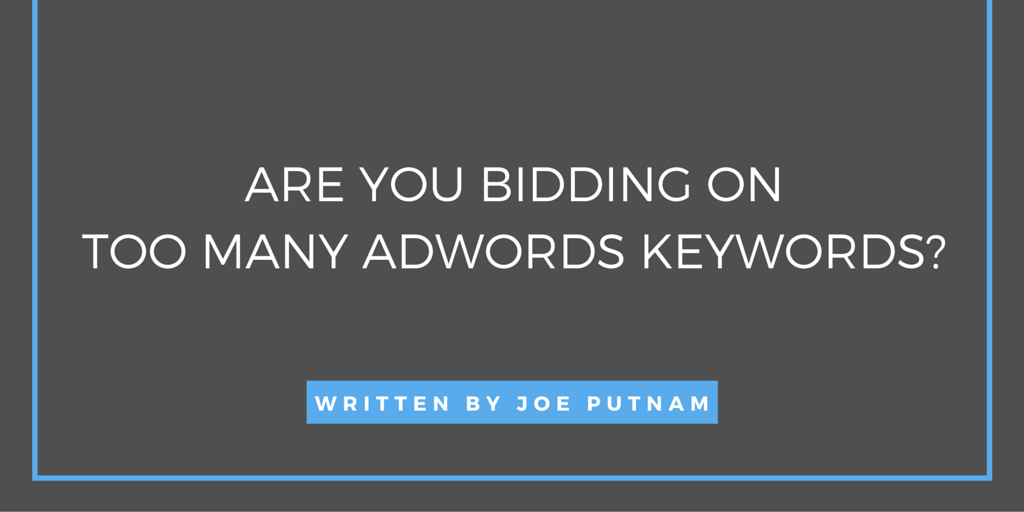
I recently read an article by Larry Kim on Search Engine Watch titled “Attention Keyword Hoarders: You Need to Delete 98% of Your AdWords Keywords – Here’s Why.”
He begins by talking about an AdWords account that’s bidding on 273,000 keywords but only gets impressions on 3372 of them (1.2%).
Here’s a graph he used that shows what that looks like:
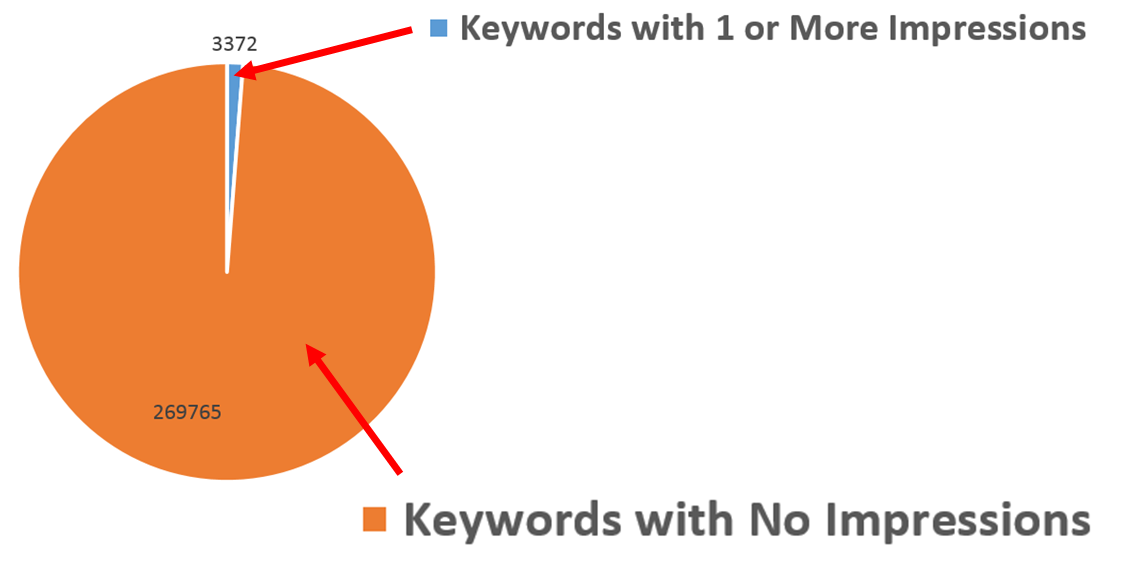
Larry then goes on to explain why this is happening and how keyword match types don’t work quite the way they used to.
For example, you previously needed to add close variants like “ispoinage” for “ispionage” in order to show ads for keywords that were typed in incorrectly, but Google now automatically adds close variants for keywords.
This is just one of a handful of ways that keyword matching has changed over the past several years (be sure to read Larry Kim’s full article to get a better understanding about some of the other ways keyword matching has changed).
After reading the article, it got me thinking about the keywords we bid on at iSpionage and spurred me to do an audit of our account to find out how many keywords we’re bidding on and how many of those keywords converted within the last year.
Here’s what I found…
iSpionage’s Top Converting Keywords
After reviewing our account, I found that 8% of our keywords resulted in conversions since January 1, 2014 to the present. That means 8% of our keywords led to 100% of our conversions.
We also found that 64% of those keywords came from brand related terms like “iSpionage” and “iSpionage.com,” and that all of our conversions came from one of four keyword categories.
Here’s a breakdown of the percentage of total conversions from each of those categories:
Takeaways and Action Items
Based on these results, I came up with some important takeaways and action items, which included the following.
#1: It’s really important to bid on brand keywords.
The first takeaway is that it’s really important to bid on brand keywords (something we cover in this post on why you should always bid on your own brand in AdWords).
64% of our conversions come from branded terms which means we could miss out on some very valuable clicks by allowing one of our competitors to place an above our organic result.
Yes, it’s annoying to need to pay Google for clicks when we’re already ranking #1 for a term organically, but it’s totally worth it if it means getting a conversion that may otherwise have gone to one of our competitors.
#2: We need to reduce the number of keywords we’re bidding on.
The next step we took was to reduce the number of keywords we’re bidding on. If only 8% of our keywords resulted in conversions over the last year, then why would we continue committing a portion of our budget to keywords that aren’t converting?
To carry this out, we pared the keyword list we’re bidding on down to the 8% or so of keywords that are converting. It felt weird to cull this many keywords, but it also means we can bid more for these terms and improve our ad rank for converting keywords instead of diluting our budget across hundreds of keywords that aren’t converting.
However, we also plan to watch this very closely and to add keywords back in here and there to build our keyword list out to get the best coverage possible without wasting our budget.
#3: We added our top converting keywords to Campaign Watch so we can keep a closer eye on them.
The next and final step we took was to add all of our converting keywords to Campaign Watch so we can keep a close eye on these keywords since Campaign Watch tracks the impression share and average ad position for core campaign keywords.
By doing so, we’re able to keep a super close eye on impression share for our converting keyword categories, as seen below with our branded terms.
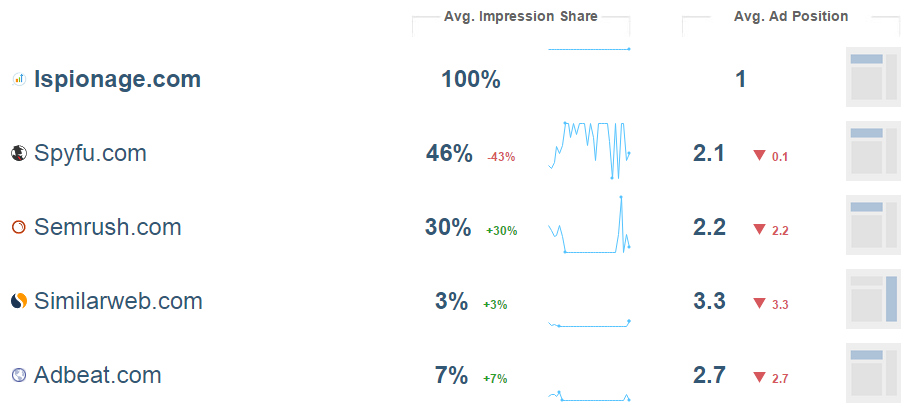
This chart shows us that we have a 100% impressions share and an average ad rank of one for branded terms. It also makes it easy to keep up with these valuable terms in case our impression share or average ad rank starts to drop at any point.
We also have a better idea of what our ads look like with the saved SERP results that Campaign Watch has to offer, and we can check the results historically since Campaign Watch saves new screenshots daily.
Here’s an example of what this looks like:
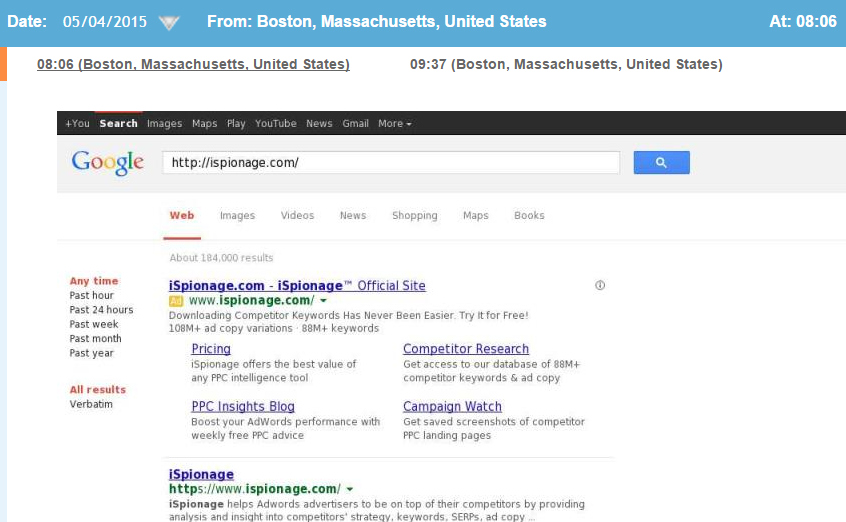
These screenshots make it easier to review your ads and to figure out how to change your ad copy and when to modify other things like call-out and site link extensions . You’ll see exactly what your extensions look like and which ones are showing up for which keywords with Campaign Watch’s saved SERP results.
Campaign Watch also makes it easy to keep up with competitor landing pages with its landing page gallery that includes saved screenshots of competitor landing pages. Not only does this make it easier to come up with competitive insights, but it also makes it easier to benchmark your campaign against the competition and to know when they update their positioning or test a new price or offer.
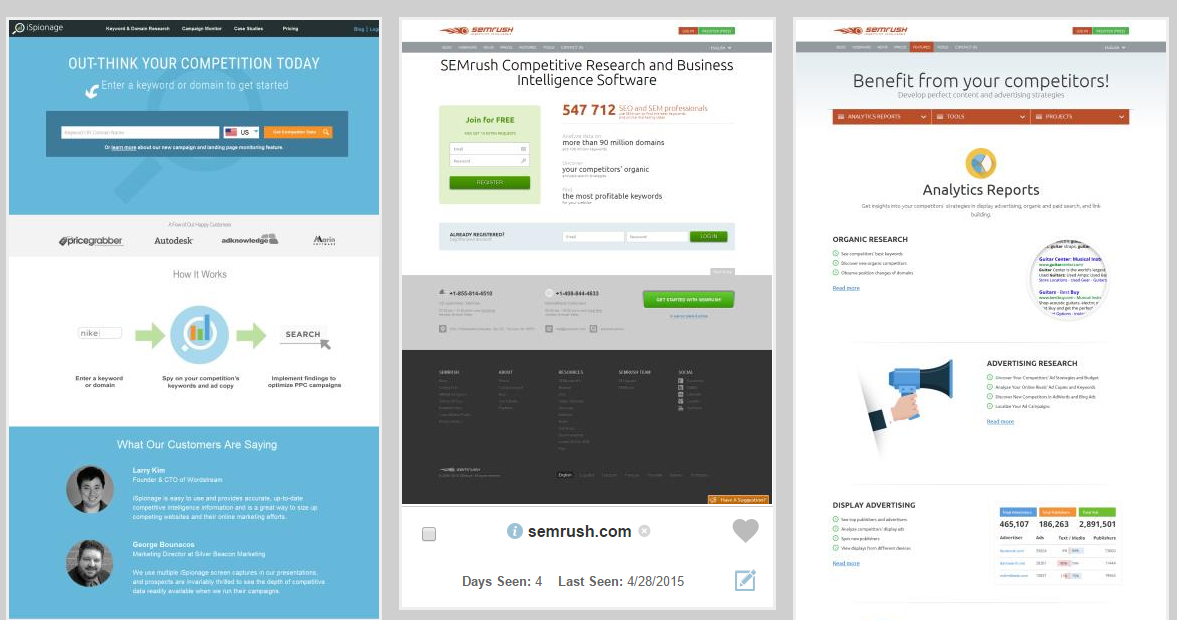
We’re still waiting to see how these changes affect our AdWords campaign performance, but we’re really interested to learn what happens by bidding more on fewer terms while closely monitoring those terms with Campaign Watch.
If you have any questions about this post, feel free to leave a comment. You can also learn more about our new PPC campaign monitoring features by visiting this page—Campaign Watch with landing page surveillance.
Author
 Joe Putnam is the Director of Marketing at iSpionage. You can get his latest PPC, CRO, and digital marketing advice on Twitter at @josephputnam or through Clarity.
Joe Putnam is the Director of Marketing at iSpionage. You can get his latest PPC, CRO, and digital marketing advice on Twitter at @josephputnam or through Clarity.







